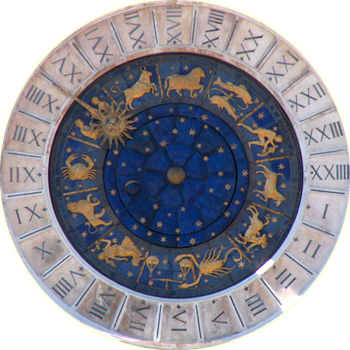
Astrology and the classical elements
Astrology has used the concept of classical elements from antiquity up until the present. In Western astrology and Sidereal astrology four elements are used: Fire, Earth, Air, and Water.
In Western tropical astrology, there are 12 astrological signs. Each of the four elements is associated with three signs of the Zodiac, which are always located exactly 120 degrees away from each other along the ecliptic and said to be in trine with one another. Most modern astrologers use the four classical elements extensively, (also known as triplicities), and indeed it is still viewed as a critical part of interpreting the astrological chart.
Beginning with the first sign Aries which is a Fire sign, the next in line Taurus is Earth, then to Gemini which is Air, and finally to Cancer which is Water. This cycle continues on twice more and ends with the twelfth and final astrological sign, Pisces. The elemental rulerships for the twelve astrological signs of the zodiac (according to Marcus Manilius) are summarised as follows:
Elements of the zodiac[edit]
Triplicity rulerships[edit]
In traditional astrology, each triplicity has several planetary rulers, which change with conditions of sect – that is, whether the chart is a day chart or a night chart. Triplicity rulerships are an important essential dignity – one of the several factors used by traditional astrologers to weigh strength, effectiveness, and integrity of each planet in a chart.
Triplicity rulerships (using the "Dorothean system") are as follows:[1]